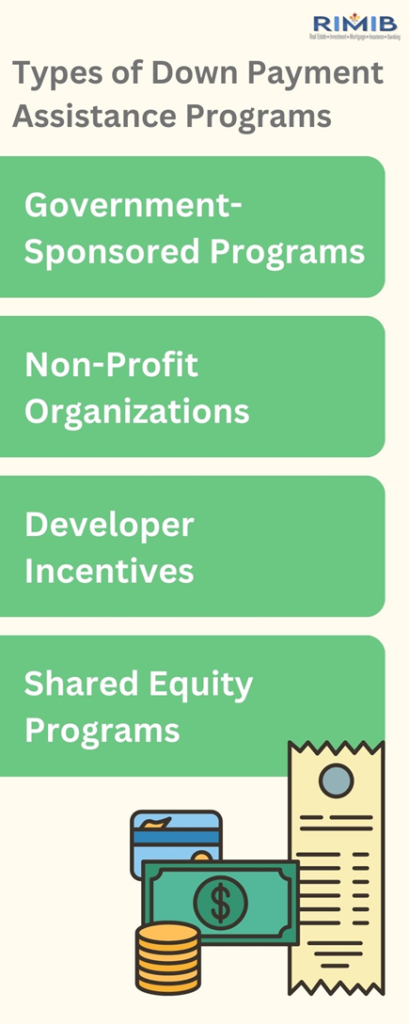Down Payment Assistance Programs in the GTA: Making Homeownership More Accessible

Homeownership has long been a cornerstone of the Canadian dream, representing stability, security, and a sense of belonging. However, the rising costs of real estate, particularly in metropolitan areas like the Greater Toronto Area (GTA), have made achieving this dream increasingly challenging for many aspiring homeowners.
In Q1 2024, GTA home prices surged by 5.2% to $1,177,700. Predictions indicate a further increase to $1,235,630 by year-end. Royal LePage computes the aggregate price using a weighted average of all housing types’ median values.
In response to this issue, Down Payment Assistance Programs have emerged as a vital resource, helping bridge the financial gap and making homeownership more accessible to a broader range of individuals and families.
The Challenge of Affordability in the GTA
The GTA, with its vibrant economy and diverse cultural landscape, has attracted people from all walks of life. However, its real estate market’s soaring prices have created a considerable hurdle for individuals seeking to enter the realm of homeownership. The hefty down payment required, typically around 20% of a home’s purchase price, is often a significant barrier, especially for first-time homebuyers or those with limited financial resources.
Introducing Down Payment Assistance Programs
Recognizing the need to address this issue, various levels of government, non-profit organizations, and financial institutions have collaborated to establish Down Payment Assistance Programs. These programs offer eligible participants financial assistance in the form of grants, interest-free loans, or forgivable loans to help cover a portion of the required down payment. Their aim is to enable prospective homebuyers to secure a home without being burdened by the entire upfront cost, thereby widening the pool of potential homeowners.
Types of Down Payment Assistance Programs


There are different types of Down Payment Assistance Programs available in the GTA, each designed to cater to varying needs and circumstances. Some of the most common types include:
- Government-Sponsored Programs: Federal, provincial, and municipal governments have introduced initiatives to provide financial aid to qualified homebuyers. These programs may offer grants or interest-free loans that don’t need to be repaid immediately or at all, depending on certain conditions.
- Non-Profit Organizations: Various non-profit organizations collaborate with governments and financial institutions to offer down payment assistance. These organizations often focus on supporting specific demographic groups, such as low-income families, veterans, or newcomers to Canada.
- Developer Incentives: Some real estate developers collaborate with financial institutions to create innovative assistance programs. These may involve shared equity agreements or discounted purchase prices for specific units, thereby reducing the initial financial burden on buyers.
- Shared Equity Programs: In these programs, the government or a housing agency invests in a portion of the property’s value, effectively lowering the required down payment. When the property is sold, the homeowner shares a percentage of the proceeds with the program.
Benefits of Down Payment Assistance Programs
Enabling Homeownership:
The most obvious benefit of these programs is that they make homeownership achievable for individuals who would otherwise struggle to save enough for a down payment.
Financial Stability:
Homeownership can provide a sense of financial stability and an opportunity to build equity over time. Down Payment Assistance Programs help people attain this stability sooner.
Economic Stimulus:
By assisting potential homebuyers, these programs contribute to the housing market’s vitality and overall economic growth.
Diversity and Inclusion:
Down Payment Assistance Programs can address social inequalities by giving marginalized groups greater access to homeownership, promoting social integration and stability.
Eligibility and Considerations
While Down Payment Assistance Programs offer valuable opportunities, it’s essential to understand the eligibility criteria and terms associated with each program.
- Eligibility often depends on factors such as income level, citizenship status, credit history, and the property’s purchase price.
- Additionally, participants should carefully review the terms of the assistance, including any repayment obligations or conditions related to property resale.
The Future of Homeownership Accessibility
As the GTA’s real estate market continues to evolve, Down Payment Assistance Programs are likely to play a more significant role in ensuring housing affordability.
- The success of these programs will depend on continued collaboration between governments, non-profit organizations, financial institutions, and the real estate sector.
- Balancing the need for affordable housing with the sustainable growth of the housing market will be crucial in the years to come.
Conclusion
Down Payment Assistance Programs are not just financial tools; they represent a pathway to the Canadian dream of homeownership for a more diverse range of people. By reducing the initial financial burden, these programs contribute to social equity, economic growth, and the overall well-being of communities. As they evolve and adapt to changing market dynamics, they hold the promise of making the GTA’s real estate landscape more accessible and inclusive, creating a brighter future for aspiring homeowners.



